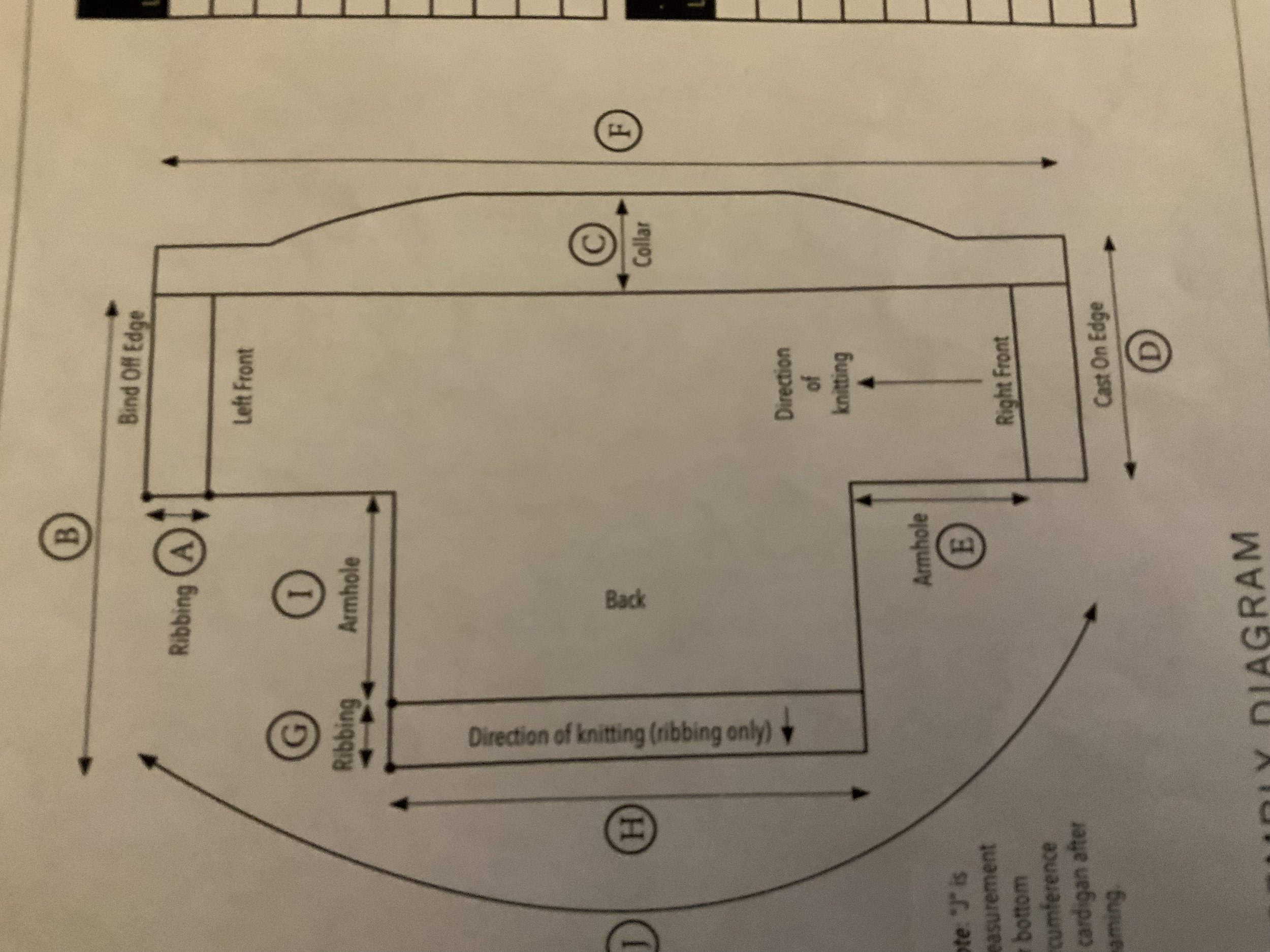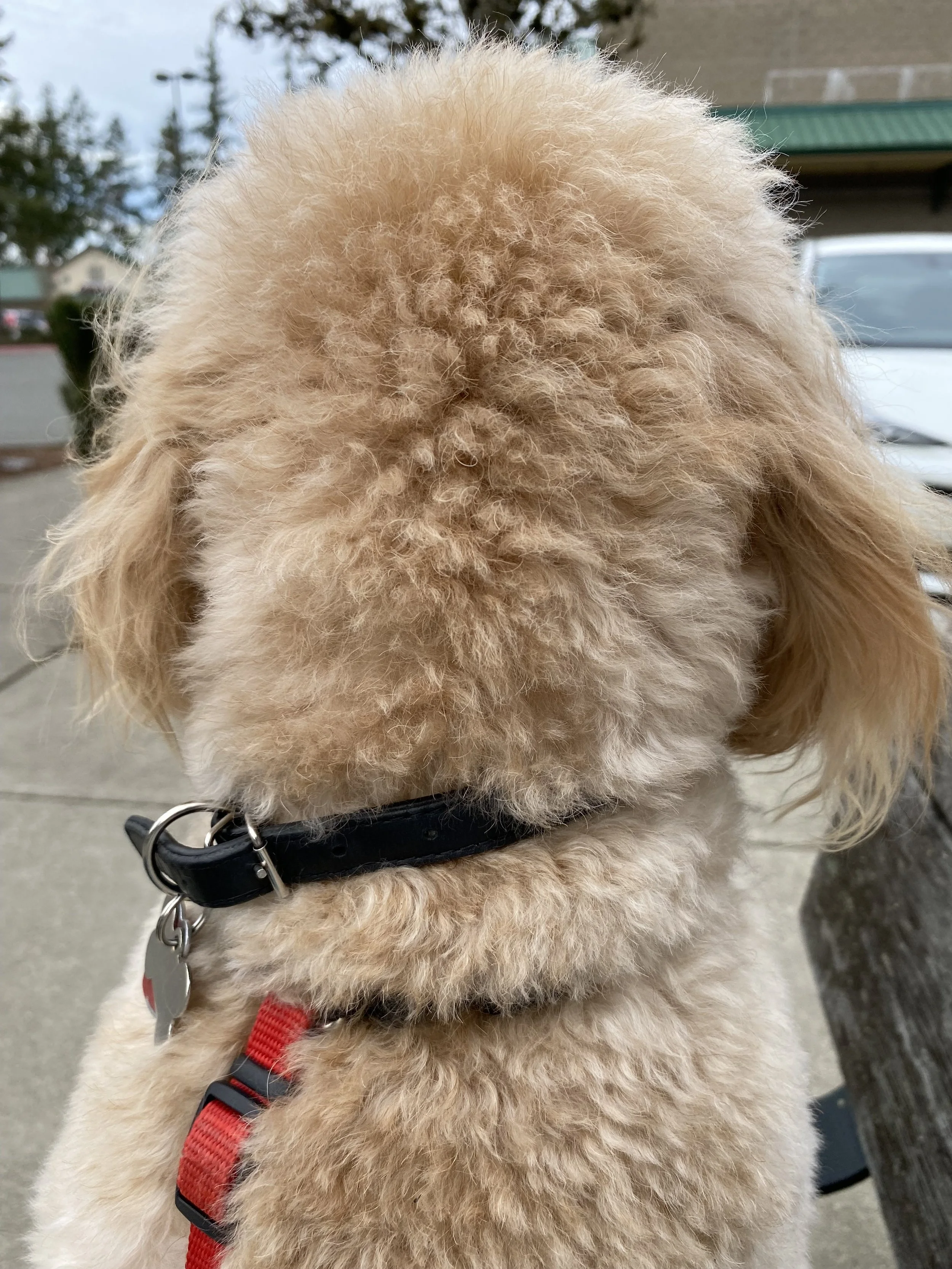#24 A WOMAN’S BRIEF: A KNITTER’S STORY
What could be more straightforward, right? This All-in-One Piece pattern calls for a purl ridge stitch that requires, you know, knit, purl, slip a stitch here and there, place some on a holder, increase and decrease according to directions. After a few hundred carefully counted rows, you have a casual wool wrap. It should look like this.
Here’s what I’m not: a perfectionist, nor am I strong on measuring stuff, at least not perfectly. What initially hindered my grasp of this pattern is that it is laid out east to west but worked south to north, and whether I’m piloting a boat or following a pattern, it’s best if I see the direction I’m heading.
Here’s another thing. I suffer the lack of what my husband has in spades—spatial intelligence, that mental feat that architects, engineers, and fighter pilots perform without thinking — retrieving and transforming visual images. Let’s face it, I began at a disadvantage. But, what the heck.
Here’s what I did.
I approached my stack of yarn, skeins and hanks of various weights and colors given to me by a dear friend, a master knitter who answered all my knitting questions until she was forced to narrow her attention to the decisive work of dying. So, let’s begin there. I treasure this grey worsted wool yarn because I treasure my friend. I didn’t have her advice at hand, but I did have five pages of explicit directions that included the Assembly Diagram, and an ever-so-helpful-to-those-attuned-to-such-detail schematic that listed specific inches to be reached by points A/B/C/D/E/F/G/H/I and J, depending on whether I worked with size 1/ 2/ or 3. Without measuring, I chose #2. It sounded about right.
I spent considerable time with my kitchen scale weighing the yarn, and determined that probably, at least I felt, surely, it seemed to me, I had enough for this project. I cast on the required stitches. I had all the tools needed: size 8 circular needles, stitch/row counter, stitch holder, place markers, crochet hook for capturing any stitch I might drop, and TV.
I wasn’t sure I had perfectly followed the instruction to: “Rep Rows 1-4 of this section (Collar Shaping - Increases) twelve (thirteen, thirteen) times more, working in pattern, adding increased stitches into the collar ribbing, ending on WS and row 4 of this section. 81 (90, 96) its [12 (13, 13) its inc’d]” Had I counted correctly? I wasn’t sure. It seemed right, and I did wind up with the 90 required stitches. I felt fine.
I stayed concerned about having enough yarn. It couldn’t hurt to shorten the called for hugely long ribbing, so when I started with the right front, I did that. By the time I reached work on the back, the piece seemed awfully big, so I improvised some. I measured—nearly as I could. Knitters know that worsted wool likes to stay snug until it is forced to size by being blocked. But blocking occurs when the garment is finished. I was nearly at a halfway point and concerned about yarn enough to finish. I lay my work on a bed. Helpful dog, Scooter Sublime, anchored one corner of the garment. I stretched the rest and measured.
Really, it looked plenty big, and remember, I was worried about yarn. So, I eliminated a few rows required at “F” and “H,” center back.
At the bottom of pattern page 5 I read and re-read: “NOTE: ‘J’ is measurement for bottom circumference of cardigan after seaming.” I mean, that’s a joke. How can you know whether you’ve managed that correctly until you’ve finished the project, right? I pressed on. After wrongly picking up 60-some stitches and ribbing an armhole thinking it was the back, then ripping that out, I rightly ribbed the back’s bottom. I tucked in loose yarn tails. I sewed two one-inch seams using the seam concealing mattress stitch — I’m not a perfectionist, but I do like neat things. Voilà!
Was this the perfect yarn for this frock? It was. Was it a lovely piece? It is.
Now, how shall I say this—nothing was right about it once off the needles. Slipped on, collar up, the frock failed to fit my human form. It really is indescribable. However, get this—I can turn the garment upside down and it’s fabulous! The curving collar becomes the ribbed bottom. The armholes at hand. The short seams designed to create armholes (see diagram above -right front to right back/left front to left back), once moved to my shoulders, settle like narrow straps one might expect to see on a sundress in summer, which isn’t so satisfying as a winter wrap, but it’s the only way this thing can be worn.
It could be that I chose the wrong size, but I think I didn’t. If I were to guess, the pattern simply didn’t take to improvisation, to the possibility of wrongly counted rows, or the entirely and deliberately deleted rows at the center back, to imperfection. I did conserve wool which was a goal. I do have plenty of yarn left. That’s nice.
“What were you thinking? Take it apart,” my master knitter friend would say, were she still alive. “Start over, do it right. Tie the kinked yarn into manageable hanks, soak them with mild soap. Rinse, wring them out. Wrap them in a towel, roll that mess up like a Tootsie Roll, stomp on it to urge all the water out. Hang the hanks in the shower or over the tub. Let them dry. Start over. You have plenty of yarn. Do it right.” She’s right.
I’m remembering a pertinent piece of advice: “If what you’re doing doesn’t work, change what you are doing.” I’m thinking alternatives.







